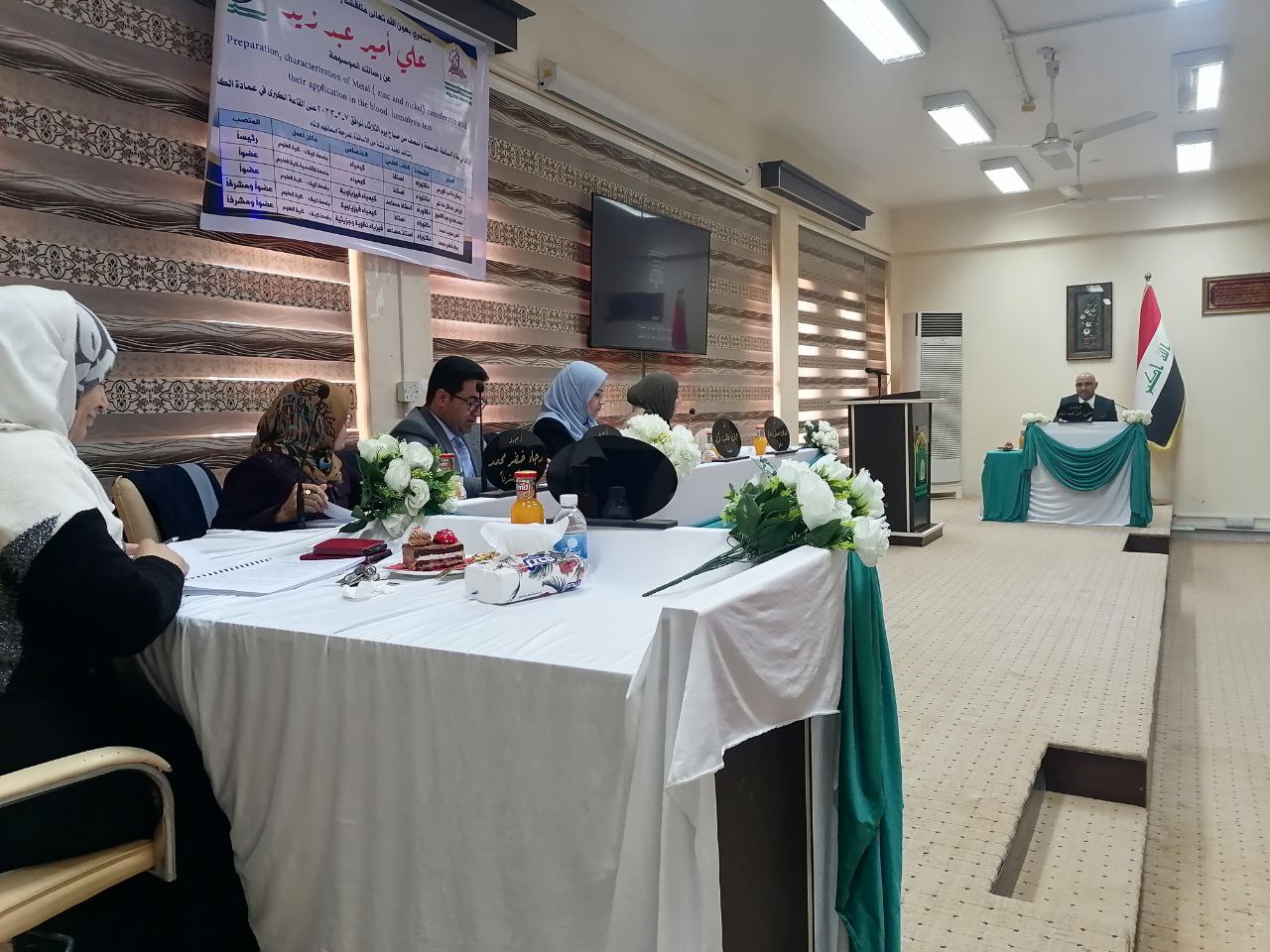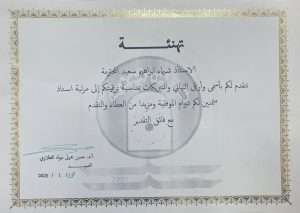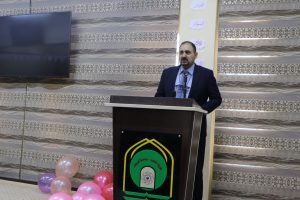A dissertation at the College of Science at the University of Kerbala has discussed the preparation and characterization of metal (nickel and zinc) Nanoferrite, entitled “Preparation and Characterization of Metal (Nickel and Zinc) Nanoferrite and Their Application in the Hemolysis Test” by student Ali Amir Abd Zaid.
The aim of the thesis was to prepare nickel spinel Nanoferrites (NiFe2O4) and zinc spinel Nanoferrites (ZnFe2O4) by co-precipitation method in the presence of a non-ionic surfactant (hexamine) as a covering agent and as a binder. The Zn-NiFe2O4 composite was prepared by interweaving the first spinel and the second spinal using ultrasound technology as a simple and environmentally friendly method. As well as, measuring the properties of all optical catalysts prepared using (FTIR, XRD, SEM, EDX) technology. It was found that all materials prepared on nanomaterials have quasi-like properties conductors because they have relatively small gap energy, and the ability of the prepared photocatalysts to remove the colour of the alkaline blue dye was tested by studying the effect of different factors on the removal of the dye in the presence of samples of the photocatalysts. Vital dyes and low concentrations of the prepared photocatalysts, as well as the application of photocatalysts in a test Hemolysis, by taking 60 samples from healthy, non-smokers, using different concentrations of NiFe2O4 spinal, ZnFe2O4 spinal, and Zn-NiFe2O4 complex.
The study has recommended adjusting the time, temperature, and solvent when preparing spinal using the sterilization step. Different types of surfactants can be used, positive, negative, and non-polar during the preparation of the backbone to control the shape and size of its crystal, as well as the preparation of different nanostructures of metallic ferrite using metals. Others such as Mo, W, Cr and the application of these catalysts in the photolysis or removal (dark reaction) of different types of dyes and the application of these catalysts in a solar cell and as a sensor as well as the use of different weights of the prepared materials and tested in the proportion of hemolysis.






























































